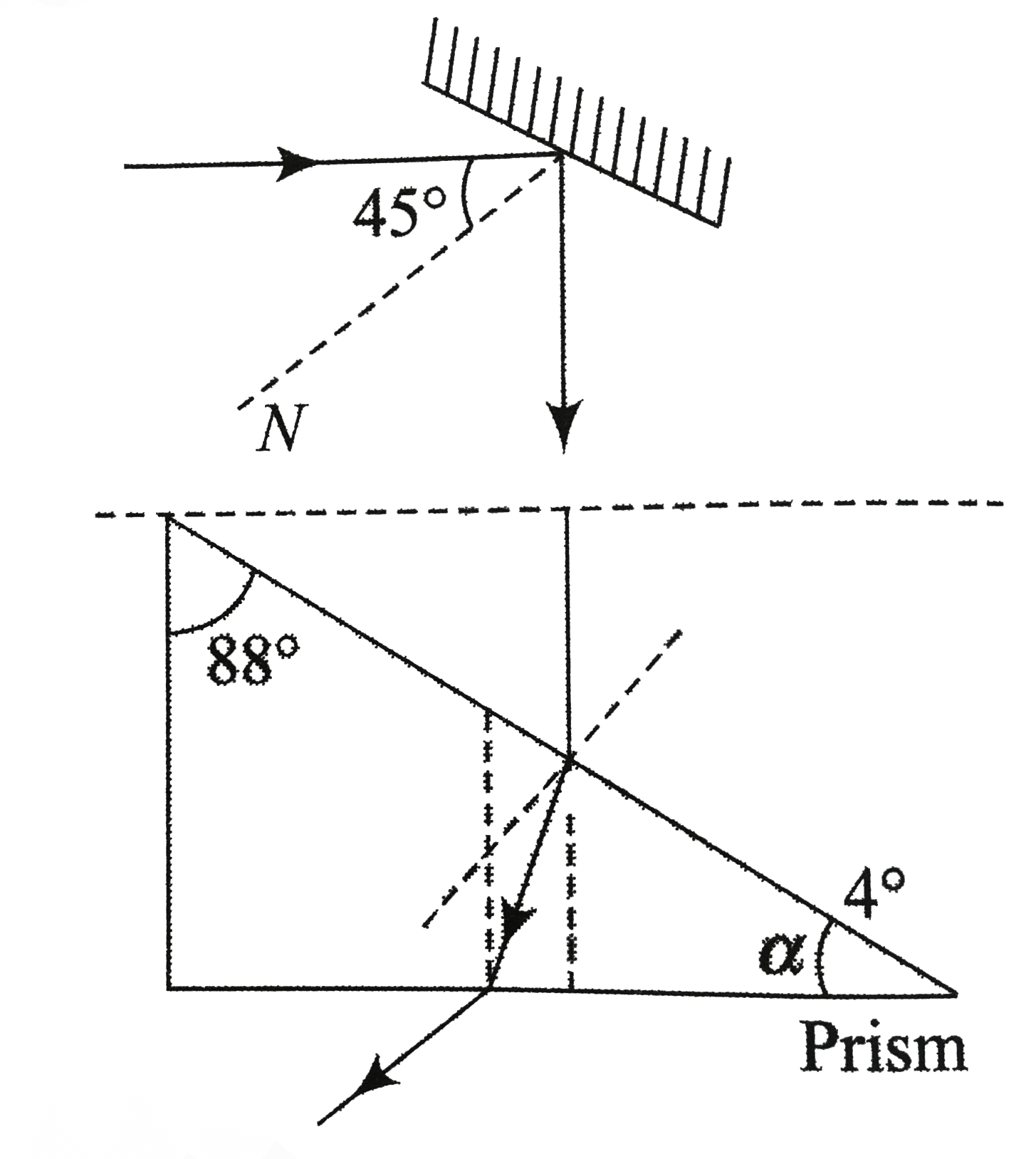Any ray of light which initially passes through the principal focus of a spherical mirror, after reflection passes through centre of curvature.
To solve the question, we need to analyze the behavior of light rays in relation to a spherical mirror, specifically a concave mirror, and understand the path of a ray that passes through the principal focus.
1. Understanding the Setup:
- We have a concave mirror with a principal focus (F) and a center of curvature (C). The principal focus is the point where parallel rays of light converge after reflection, and the center of curvature is the center of the sphere from which the mirror is a part.
2. Ray of Light Passing Through the Focus:
- According to the question, we consider a ray of light that initially passes through the principal focus (F) of the concave mirror.
3. Reflection of the Ray:
- When this ray of light passes through the focus and strikes the mirror, it reflects off the mirror. The law of reflection states that the angle of incidence is equal to the angle of reflection.
4. Path After Reflection:
- A ray that passes through the focus (F) after reflection does not pass through the center of curvature (C). Instead, it becomes parallel to the principal axis of the mirror. This is a fundamental property of concave mirrors.
5. Conclusion:
- Therefore, the statement in the question is incorrect. A ray of light that initially passes through the principal focus does not pass through the center of curvature after reflection; it travels parallel to the principal axis.
Final Answer:
The statement "Any ray of light which initially passes through the principal focus of a spherical mirror, after reflection passes through the center of curvature" is false. Instead, the ray becomes parallel to the principal axis after reflection.
---
- We have a concave mirror with a principal focus (F) and a center of curvature (C). The principal focus is the point where parallel rays of light converge after reflection, and the center of curvature is the center of the sphere from which the mirror is a part.
- According to the question, we consider a ray of light that initially passes through the principal focus (F) of the concave mirror.
- When this ray of light passes through the focus and strikes the mirror, it reflects off the mirror. The law of reflection states that the angle of incidence is equal to the angle of reflection.
- A ray that passes through the focus (F) after reflection does not pass through the center of curvature (C). Instead, it becomes parallel to the principal axis of the mirror. This is a fundamental property of concave mirrors.
- Therefore, the statement in the question is incorrect. A ray of light that initially passes through the principal focus does not pass through the center of curvature after reflection; it travels parallel to the principal axis.
The statement "Any ray of light which initially passes through the principal focus of a spherical mirror, after reflection passes through the center of curvature" is false. Instead, the ray becomes parallel to the principal axis after reflection.
Topper's Solved these Questions
- LIGHT ENERGYBOOK - ICSECHAPTER - LIGHT ENERGYEXERCISE - EXERCISE 5.2 (Objective Type Questions) C. Write .true.of .false. for the following statements :
5 Videos
- LIGHT ENERGYBOOK - ICSECHAPTER - LIGHT ENERGYEXERCISE - EXERCISE 5.2 (Objective Type Questions) D. Tick the most appropriate answer.
5 Videos
- LIGHT ENERGYBOOK - ICSECHAPTER - LIGHT ENERGYEXERCISE - EXERCISE 5.2 (Objective Type Questions) (A. Fill in the blank spaces by choosing the correct words from the list given below :) <br> (List : concave, principal axis, spherical, convex mirror, principal focus)
5 Videos
- HEAT TRANSFER BOOK - ICSECHAPTER - HEAT TRANSFER EXERCISE - Picture Study
2 Videos
- MATTER BOOK - ICSECHAPTER - MATTER EXERCISE - THEME ASSIGNMENT
25 Videos
Similar Questions
Knowledge Check
For an incident ray directed towards centreof curvature of a spherical mirror, the reflected ray:
Aretraces its pathBpasses through the focusCpasses through the poleDbecomes parallel to the principal axis
If an incident ray passes through the focus, the reflected ray will
View SolutionAn imaginary line passing through the pole and the centre of curvature of the spherical mirror
View SolutionA ray of light passing through the focus, after reflection from a concave mirror travels ……….
View SolutionA ray of light passing through the point (1, 2) reflects on the x–axis at point A and the reflected ray passes through the point (5, 3). Find the coordinates of A.
View SolutionA ray of light passing through the point (1,2) reflects on the x-a xi s at point A and the reflected ray passes through the point (5,3) . Find the co-ordinates of A.
View SolutionA ray of light strikes a plane mirror at an angle of incidence 45∘ as shown in Figure . After reflection,l the ray passes through a prism of refractive indes 1.5 whos apex angle is 4∘. Through what angle must the mirror be rotated it total deviation of the ray be 90∘ ?

View SolutionA ray of light is sent through the point P(1,2,3) and is reflected on the XY plane. If the reflected ray passes through the point Q(3,2,5) then the equation of the reflected ray is
View Solution
